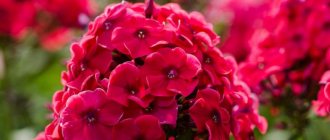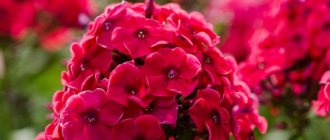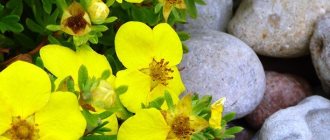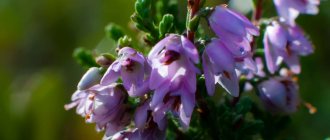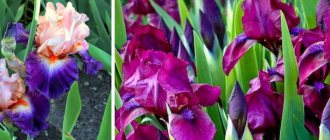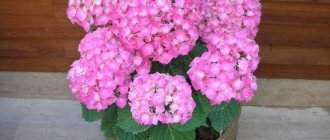Description of weigela
Of course, it is plants that make any area alive and attractive. Decorative flowering shrubs are especially popular in landscaping gardens and plots. Weigela is one of the favorites among them.
General form
The ornamental weigela shrub belongs to the deciduous perennial shrubs of the honeysuckle genus. The shrub is 50–150 cm and even 3 m high, has erect stolons (does not form underground side shoots), with opposite leaves on very short petioles. Depending on the type of weigela, the leaves can have a light to dark green color - with a white or silver edge, or can be dark brown. In autumn the leaves fall. The flowers are tubular in shape, reminiscent of bells with a diameter of 2 to 5 cm, rarely solitary, usually collected in inflorescences of 3-7 pieces.
Small flowers resemble bells
Color scheme and flowering features
A pleasant plus when choosing weigela is the variety of colors of the flower corollas: there are not only red, single, white palette options, but also yellow, cream, and even with a speckled pharynx from which long stamens and pistil peek out. The undoubted advantage of weigela over many other plants is its two-fold abundant flowering: the first is observed in May-June and the second, less lush, in August-September, and in some cases until the beginning of October.
An interesting feature of flowering: as the corollas open, they gain color, becoming increasingly bright from pale. Of the minuses: the aroma of flowers is too weak to allow them to be enjoyed, although they will still attract pollinating insects to the garden.
Variety of colors of flower corollas of different varieties of weigela
Reviews from gardeners
Olga
Penza
Three years ago, a friend from Khabarovsk, an experienced gardener, brought as a gift several seedlings of the Wegeila Middendorf shrub variety. I planted it immediately in open ground. I watered it for the first month, since the beginning of summer was without rain. Out of 5 bushes, 4 survived and bloomed the next year. True, they bloomed only once. The plant is pleasing because it does not require special attention, grows quickly and blooms beautifully.
Venus
Kazan
A neighbor in her dacha shared a bush seedling. She said it was Middendorff wegeila. I had never heard of such a plant before. I planted it in the ground near the wall of the bathhouse, on the sunny side. The bush quickly took root and began to grow. This year it bloomed very beautifully with yellow flowers. I liked the plant. I would also like to purchase a couple of seedlings, but our nurseries have never even heard of such a plant. I will order seedlings online.
Hermann
Ekaterinburg
A year ago we purchased a garden with plantings. Among the ornamental shrubs we discovered a variety unknown to us, blooming with yellow bells. After a long search for information, it turned out that this is Wegeila Middendorff. We decided to leave it in place. His wife planted some flowers next to him. The end result was a beautiful, bright flowerbed. It blooms twice a year - in June and August.
Types of weigela
There are 15 species of weigela in nature. A fairly large variety of varieties have been selected, but most often only a few are used in site design. The selection criteria are external diversity, adaptability to the natural conditions of the growing area, and ease of plant care. The following species and varieties have received the greatest recognition in the landscape design of private plots: flowering weigela, hybrid, variegated, Alexandra weigela, Bristol ruby, Variegata, Nana purpurea, Middendorfa.
Weigela blooming
A tall shrub reaching 3 m. The leaves, depending on the lighting, are green or variegated. The color of the inflorescences ranges from pale to brightly colored. Pleases with the first flowering lasting up to 20 days. This species prefers partial shade, slightly acidic, well-moistened soil without stagnation of water.
Weigela blooming
Weigela hybrida
A mix that combines the properties of 4 types, is widespread in use, and is quite unpretentious in terms of growing conditions and care. Shrub up to 1.5-2 m tall, with dark green leaves and loose, richly single inflorescences. Lover of the optimal ratio of light and partial shade.
Weigela hybrida
Weigela variegum
A medium-sized shrub 1-1.4 m high. The unusualness of this species is the variegated color of the foliage. The color range of corollas is very diverse; there are varieties with double colors. It is a favorite among gardeners for growing on plots.
Weigela variegum
Veigela Alexandra
A slow-growing shrub, the distinctive feature of which is the color of the leaves: from dark green to almost black. Blooms with dark pink or dark crimson bells. Does not like abundant watering, quite frost-resistant.
Veigela Alexandra
See also: Catalog of projects of houses made of laminated veneer lumber
Weigela Bristol ruby
Frost-resistant, tall (up to 3 m), with a lush (up to 2 m) crown, lover of moist, fertilized soils, surprises with dark red, ruby and lilac color when flowering.
Weigela Bristol ruby
Weigela Variegata
Medium-sized, reaching 90 cm in height, blooming profusely (all shades of pink) and bright green foliage. Frost-resistant, easily tolerates soil compaction, as well as alkalization or acidification of the substrate, and is not fussy about lighting.
Weigela Variegata
Weigela Nana purpurea
Sun-loving plant up to 1 m in height. It is distinguished by dark red or brown leaves, pink, with a lilac tint, flowers collected in inflorescences of 4.
Weigela Nana purpurea
Weigel Middendorf
A distinctive feature of this species is its thick, almost round crown, formed from large velvety leaves of rich green color. The unusual color of the flowers lies in the purple or orange speckling of the pharynx and the pale yellow or cream corolla. Flowers up to 3-4 cm in diameter are collected in inflorescences of 2 to 6 pieces. Late re-blooming is also attractive for use in garden decoration: from late August to October.
Weigel Middendorf
Mr. Summer resident warns: problems when growing weigela and their solution
In spring, weigela grows poorly and does not gain vegetative mass. The reason for this may be the freezing of the plant in winter, which affects the decrease in activity. Treating with Epin and applying special fertilizers will help solve the problem. If even in mid-June the weigela has not turned green, then the plant can be uprooted - it is dead.
After transplantation, the plant withers and dries. This may occur due to stress and exposure to sunlight. Weigela must be covered to protect it from the sun for 2-3 weeks, until the adaptation period ends and the roots take root.
Using weigela in landscape design
In landscape garden design, Weigela decorates the garden plot with both the brightness of greenery and the variety of colors during flowering periods.
The shrub can be used as an independent element that visually creates a certain volume of the site, separating its various zones. The height of the shrub allows it to be used as a connecting transitional link from trees to low-growing plants, filling the free space between them. The variety of weigela species and varieties makes it possible to find one that will become the ideal background for other plantings.
Decorating a site with a single free-form weigela bush
See also: Catalog of companies that specialize in arranging winter gardens
Formation of bushes
By correct and regular pruning of shrubs, you can form bright, low borders, decorating with them the plain lawn of the entrance area. An interesting solution for decorating the lawn with a single weigela bush. In this case, you can leave the bush free-form or give it an unusual standard shape. Weigela is quite easy to cut and model, which allows the owners of the site to show their imagination.
Standard forms of weigela bushes
Weigela hedge
All tall varieties are good for creating hedges. A hedge is a beautiful and practical idea for decorating a garden plot, allowing you to abandon the fence, but performing its function: marking the border of the garden and protecting it from drafts, while delighting with the sophistication of flowering. The optimal use of hedges is in garden design. This is achieved by zoning the site (a hedge is one of the best means of zoning, since living things are much more effective than non-living things) and decoration (the ability to disguise a not very attractive appearance)
Having determined the personal requirements for a hedge for the site: functionality, desired height, appearance, time and effort required to care for it, a weigela variety is selected.
In addition to the general features necessary for plants in a hedge (fast growth, good tolerance to thickening, ease of care), weigela has the advantage of repeat flowering and the ability to choose in care - you can trim and shape the bushes, or you can not do this, minimizing the time for maintenance plants.
A hedge formed from weigela bushes
Selecting a location
When choosing a place for Middendorf weigela, you need to know whether it prefers sunny areas or openwork shade. The shrub needs protection from drafts - even a not very strong wind can damage the leaves of the plant and its flowers. In this case, the place should be on a slight elevation; an artificial one will do. In what part of the garden should the bush be planted? It all depends on the region: after all, planting and caring for Middendorf weigela in the Moscow region differs from the conditions for maintaining shrubs in Krasnodar. The best option is to plant on the south side of the house.
The advantage of variegated weigela in design
Without a doubt, the variegated weigela species is universal in landscape design. This is a wonderful opportunity to play with color, giving the corner of the garden where a bush or group of bushes will grow, zoning or decorating the area, lightness and liveliness with the peculiarity of the color of the leaves: the green of the leaf plate is bordered by a white, yellow or silver rim. The grayish green leaves with shades of red or brown look unusual.
The variegation of the plant will ensure that the greenery does not become monotonous outside the flowering period. And twice a season, weigela will decorate the area with various shades of pink blooms.
The choice in using this miracle species is yours: form a hedge, a standard form, or leave an unformed natural bush. In any version, variegated weigela will be an excellent decoration for the garden landscape.
Weigela variegum
Middendorf in winter
What can be said about the winter hardiness of Weigela Middendorf? This shrub can easily tolerate frosts down to -29 degrees! True, the plant must be prepared for cold weather.
At the end of November - beginning of December, when all the leaves from the weigela have fallen, you need to sprinkle the tree trunk circle with earth, forming a low hill - 15-20 cm. The branches of the plant must be carefully bent and pressed to the soil, and covered with roofing material on top. It is important to secure the coating so that it does not get torn off by the wind. Another option is to simply tie the branches together with rope or twine and fence the bush with a metal frame. You need to pour dry leaves inside this structure - it will retain heat. Gardeners recommend wrapping the structure with thick covering material on top.
Combination with other plants
Weigela combines wonderfully with other plants. A flowering hedge of shrubs will perfectly set off the monotony of coniferous plants. In a group composition with juniper, cypress, boxwood or berry yew, weigela will become a bright highlight of the mixborder, making it more picturesque. The proximity of weigela with cotoneaster, barberry, and rhododendron looks good. Medium-sized varieties are beautifully complemented by fern bushes. Low-growing representatives of weigela look great in the company of hosta, irises, petunias or hyacinths.
The combination of weigela with pine trees, cypress trees, and other ornamental bushes
Weigela in mixborders with juniper, thuja, boxwood, hosta
2.When does an ornamental shrub bloom?
Flowering occurs in late spring - early summer. The specific timing will depend on the air temperature and the type of shrub. Sometimes the first buds appear even before the leaf blades are formed. The flowering period can last 3 - 4 weeks.
Timely pruning and warm weather in the fall can stimulate a second wave of flowering, although it will be less abundant than the first. Repeat flowering occurs in late summer - early autumn, with buds appearing on the current growth.
↑ Up,
Growing conditions, features of care and reproduction
Weigela is a shrub with some peculiarities of growth conditions, care and reproduction. So, the plant loves the sun, but feels great in partial shade, and some species are adapted to shade. It prefers a loose fertile neutral substrate, although it tolerates slight acidification or alkalization of the soil.
The shrub loves frequent watering, but does not tolerate stagnation of moisture, which necessitates drainage of the substrate. Does not like low temperatures and winds. Some species are recommended to be covered for the winter, but frost-resistant varieties have also been bred. Responsive to mineral supplements. Tolerates pruning well. Resistant to pests.
It is propagated by seeds, cuttings, layering, but it is much easier to purchase one- or two-year-old seedlings ready for planting in the spring. This will help you quickly see the beauty of the flowering shrubs and decorate the space of the site.
Shrub cuttings
By choosing the right weigela variety, placing the main accents in the design of the site and deciding on the company of plants in the mixborder, with proper care you can create the graceful beauty of your garden area. The use of weigela shrubs allows you to show individuality, creativity, and the ability to improvise.
Landing
The main condition for the successful cultivation of pink-colored weigela varieties is strict adherence to all the rules and subtleties of agricultural technology for their cultivation. To do this, you will need to choose the right place for the bush and plant it on time. Only this will create optimal conditions not only for successful flowering, but also for the longevity of weigela.
Selection and preparation of a site
For planting, weigels choose open areas, but protected from drafts and strong winds . The place for the future flower bed should be well lit, but it is also permissible to grow the crop in partial shade. It is best to choose areas on a hill or plain ; planting seedlings in a lowland can provoke increased humidity in the growth zone of the bush, which is the best condition for the development of all kinds of fungi.
Video: review of blooming weigela
This group of plants is not picky about soil, however, the most decoratively valuable specimens grow on a well-fertilized and loose substrate with a high content of organic compounds. Preparations for planting shrubs begin approximately 2 weeks before the expected planting date.
To do this you should:
- Clear the soil of weeds and debris.
- Lighten the soil (if necessary). To do this, add 1 to 3 buckets of river sand per 1 m².
- Add peat, humus, rotted manure or compost at a rate of 5–10 kg/m².
- It is good to plow the soil to a depth of at least 30 cm, and then level the area.
How to care for weigela to grow a lush shrub
When you have completed spring planting, you should think about how to care for weigela. There is nothing super complicated in this task. You just need to follow certain rules.
- Firstly , be sure to water the seedling during dry periods. But if you were prudent and carried out the mulching procedure - covering the soil around the plant with a layer, for example, of bark - then you are not in danger of frequent watering.
- Secondly , you need to ensure that the area where weigela grows remains clean: that is, you need to regularly and very carefully pull out the weeds so as not to catch the root system of the bush.
- Thirdly , do not forget to thoroughly loosen the soil.
If you follow all the listed instructions, you will soon achieve the result that you can see in the photo of the flowering weigela shrub:
Of course, when wondering how to grow weigela healthy and blooming luxuriantly, you immediately remember adding nutritional fertilizers to the soil. True, if you have already done this in advance - added compost under the roots when planting - then you can safely forget about this moment for the next two years. But in the third year you will still have to work hard and be sure to fertilize the soil in early spring with minerals containing phosphorus, nitrogen and potassium. This will ensure the growth of young shoots and leaves.
We must not forget that it will help to achieve the desired result, which you can appreciate if you look at the photo below, caring for weigela shrubs, which involves fertilizing in late May or early June:
This is when the plant produces buds.
Therefore, fertilizers must necessarily contain potassium and phosphorus. This will help prolong the flowering period and make it truly magnificent.
But the third time you need to pay special attention to fertilizing the bushes before the autumn digging. Then you should add 200 g/m2 wood ash to the soil.
Be sure to sprinkle the area around the plant with soil to form a mound when all the leaves have fallen off. This moment will come around the end of October or early November. In addition, bend the branches of the bush to the ground and press it to it, and cover the top with spunbond or roofing felt. All this is done in order to protect the weigela from the coming winter frosts.
Remember, in order to achieve the effect that you see in the photo, you need to care and grow weigela in accordance with the rules and procedures that we have described to you:

